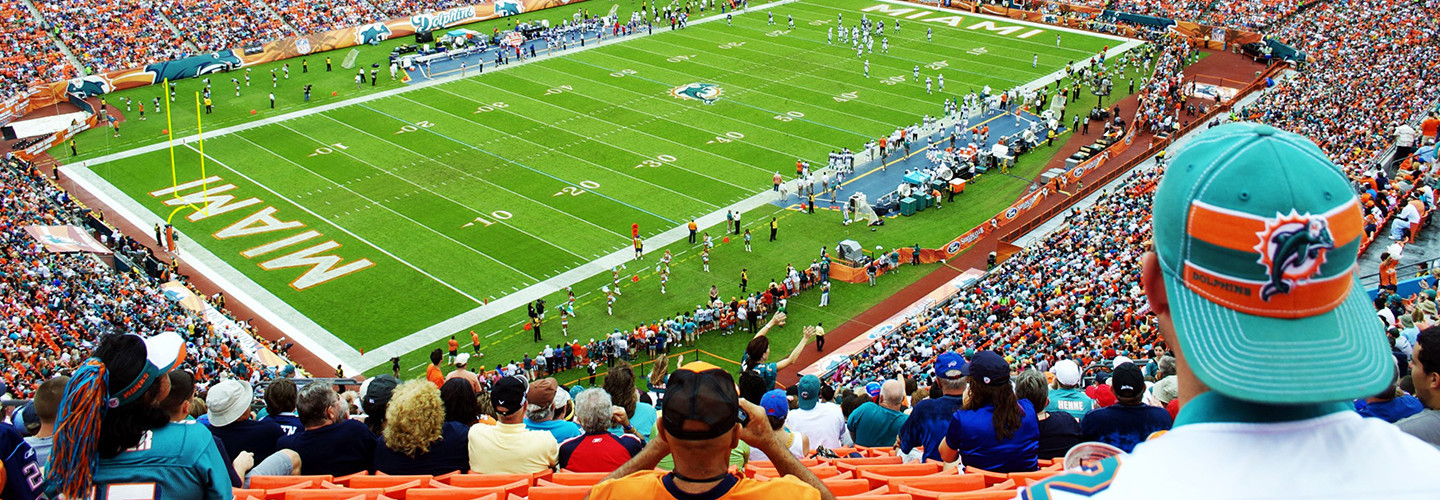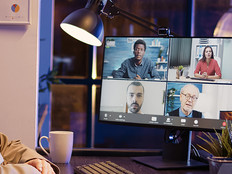Sloan 2016: Connecting the Dots in the Connected Stadium Experience
Live sports is at a crossroad. High-definition TVs are getting cheaper every day, and more fans are electing to stay home. But sports teams at both the the college and professional level are fighting back with the connected stadium. A panel of experts in the sports and technology industries sat down to discuss how technology can help bring fans back to the arena at the 2016 MIT Sloan Sports Analytics Conference in Boston.
“There’s no substitute for a live experience. That’s what makes you a fan,” said Priya Narasimhan, founder and CEO of YinzCam.
But fans have many pain points when it comes to going to a venue to watch a game. Miami Dolphins President and CEO Tom Garfinkel said that fans sometimes have conflicting opinions, but the major issue seems to be that people want to get in and out quickly, before and after the game. Watching a game in person is always better, but we have to improve every aspect of the experience, he said.
Mike Riegel, vice president of industries, platforms and services marketing for Cisco Systems, said fans were clear about what they wanted when surveyed by the company:
- Simple connected Wi-Fi.
- An easy way to find and pay for parking.
- Stats for players.
- A more comfortable seat.
- Better food.
Five years ago, people thought the at-home experience was better than the in-person experience, said Brian Lafemina, senior vice president of club business development for the NFL, but that was related to fan pain points, such as parking and a lack of stats and video replays at the stadium.
Expanding the Stadium Experience
The mobile revolution, which has transformed professional and personal lives worldwide, has clearly made its mark on professional sports.
“99 to 100 percent of fans bring a phone into the stadium,” Riegel said. “Whether they’re at a game or not, people are checking their phone every 7 minutes.”
But the influx of phones at games doesn’t have to be a negative. With the right mobile app, smartphones can deliver information and suggestions to fans; for instance, letting them know that there are no lines at a nearby concession stand or pointing out that there are shorter lines at a bathroom around the corner.
“It’s all about creating a seamless experience,” said Neal Campbell, senior vice president and chief marketing officer at CDW.
A good mobile app provides almost instantaneous information, Campbell said. You don’t want someone waiting 5 or 6 seconds for a response.
“You have to deliver the content to the people when they want it,” he said.
And content doesn’t always have to be generated by the teams, Garfinkel pointed out. The smartphone is an ideal tool for user-generated content as fans communicate with other fans throughout the game, on sports apps and social media.
But, Lafemina added, “if you have to reach for your phone to find out something that we should have put up on the big board, then we’ve failed.” Replays should be available in stadium before fans turn to their phones.
“Tailgating is a also big part of what we do,” said Garfinkel. “We would like to manage the parking experience the same way we manage the seats, where fans can reserve a specific spot.”
He envisions an Uber tailgating experience, in which the ride-sharing service drops fans off at a reserved spot near the stadium, where a grill is waiting. After the tailgate, the fans head into the game, leaving cleanup to the team. Then, after the game, their Uber is waiting to take them home. Expanding on this idea, Garfinkel imagines a family tailgating area where groups could party together and then sit in the same section during the game.
Supporting the Connected Stadium
Connected stadiums may be the future, but the right infrastructure must be in place to support it. For example, according to Campbell, 10 terabytes of data were transferred during this year’s Super Bowl in Santa Clara, Calif., compared with 6TB during the 2015 Super Bowl in Phoenix. Campbell advised teams to be sure to have the end game in mind because it’s hard to remake a wireless infrastructure once it’s built. The best course: Plan ahead and leave room for growth.
And if you’re building a custom app, Garfinkel said, don’t neglect the infrastructure because you don’t know what you’re going to need in five years.
Riegel agreed, saying, “Have a three- to five-year plan in place for your infrastructure to allow for growth.”
On the other hand, it can be dangerous to plan out too far ahead, as the technology fans use to consume content will undoubtedly change, said Narasimhan. Teams must ensure that stadiums can keep up with whatever technology fans are using to consume information, including increasingly popular wearable technologies.
Beyond the Fan
The connected stadium can do more than just provide a great experience for fans. It can also help the teams at play on the field. For example, said CDW’s Campbell, an iPad device connected to the stadium’s Wi-Fi network can allow players to study film and review the week’s game plan. The Indianapolis Colts worked with CDW to provide iPads to its players for just this purpose.
The connected stadium can also help with the “sideline of the future,” said the NFL’s Lafemina. For years, NFL teams would print out pictures on the sideline of the previous drive to study and make adjustments for the next move. The league is testing the idea of providing teams with Microsoft Surface Pro 3 tablets so that they can watch video of previous plays instead of looking at still pictures.
Looking to the Future
There’s no doubt that the connected stadium has changed the fan experience, but what’s next? Virtual reality, for one thing. The Miami Dolphins’ Tom Garfinkel said that VR could help change the out-of-stadium experience by, say, putting fans courtside during an NBA game or in the pits at a NASCAR race. “When we get there, you go from selling 70,000 tickets to 1 million tickets,” he said.
And beyond fan benefits, Campbell said, the next big thing will be advances in player safety, through the use of biometrics. “The more data we can collect, the safer we can keep players,” he said.
Garfinkel, describing traffic tie-ups during weeknight games, said solutions to traffic problems through advances in end-to-end transportation could be the next big thing.
“During peak times, we used to waive people through and not charge for parking so that everyone could get into the game on time and not be stuck in traffic,” he said. Such tactics cost the team tens of thousands in lost revenue, he added.
“We need to find a better way to manage that,” Garfinkel said.
For more information from the show, check out our complete coverage from the 2016 MIT Sloan Sports Analytics Conference.








